Pimsleur Japanese Vs Memrise Japanese | 2024 (with Product Photos)
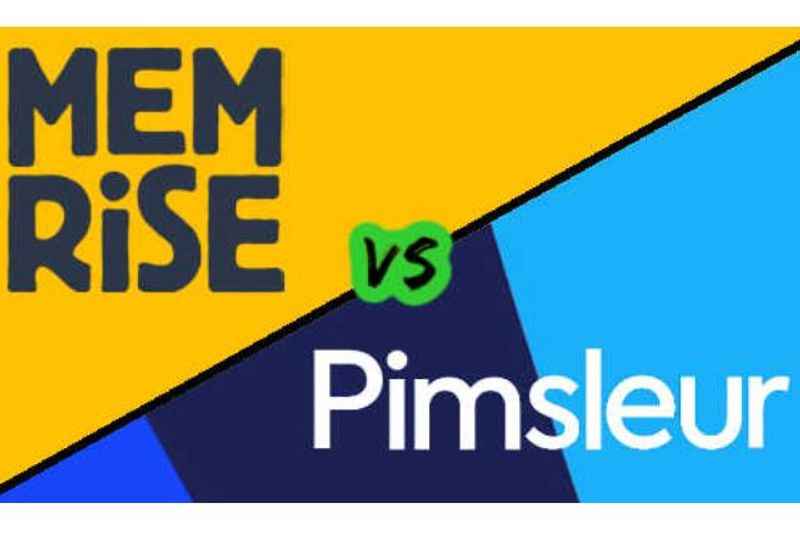
Are you interested in learning Japanese and speaking it with confidence? Look no further than Pimsleur Japanese and Memrise Japanese courses.
With the Pimsleur method, you can quickly grasp the essentials of the language and engage in conversations.
Meanwhile, Memrise provides a fun and interactive app with a unique "Learn with Locals" feature, allowing you to practice pronunciation and learn useful travel phrases.
Whether you're a beginner or seeking to expand your vocabulary, these courses are ideal for travelers looking to communicate effectively in Japan. Let's explore them both in more detail.
Review Summary

Both Pimsleur and Memrise are quality language learning apps and are ideal, particularly for beginners.
Pimsleur is a great resource if you aim to understand Japanese as well as you speak it, while Memrise is a superb vocabulary builder that will help you to learn many words in a very short space of time.
Overall, Pimsleur is much better option if you want to actually learn the Japanese language.
This is due to its 30 minutes per day methodology, which forces you to listen and remain active, not passive. This all falls under the Pimsleur Method, which is proven language learning methodology.
How We Did This Review

Let’s get the important stuff out of the way first:
- Yes - this is me in Japan earlier this year. In Tokyo, to be precise, an incredible city. Sorry, I did not opt for Asahi when asked what I’d like to drink.
- Yes - I did go all the way to Tokyo and eat in a Korean barbeque restaurant.
- No - the other contributors to this review did not make the cut!
I’m James, and I wanted to make this review as varied, informative and unbiased as possible.
The review is written based on my own experience using both apps and testing the courses myself.
I am a French and Spanish teacher who has studied Japanese in the past. However, I am a complete novice with Japanese and have a limited understanding of Kanji and Katakana (although I did teach myself Hiragana).
The Review Factors - How Does it Work?
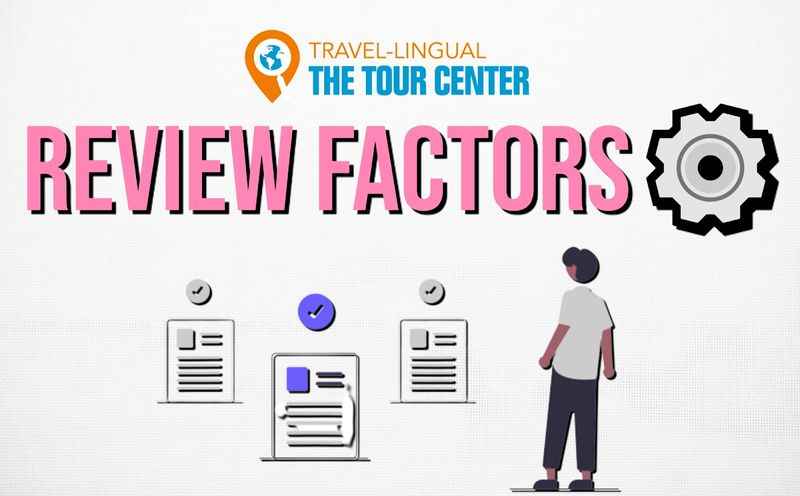
The opinions expressed in the post are ours and are unbiased.
We'll be discussing our experience and providing feedback on Pimsleur and Memrise with three key factors in mind.
These are as follows:
- Effectiveness – We'll discuss the progress we'd expect beginners to make in these courses, as well as the projected progress one would be able to make when learning Japanese over a prolonged period.
- Value for money – We'll compare these two apps with other courses.
- Ease of use – As language learners, user experience plays a large part in whether we keep coming back, resulting in progress. A poor user experience usually leads to a lack of progress.
Pimsleur Japanese and Memrise Japanese - Who Are They For?
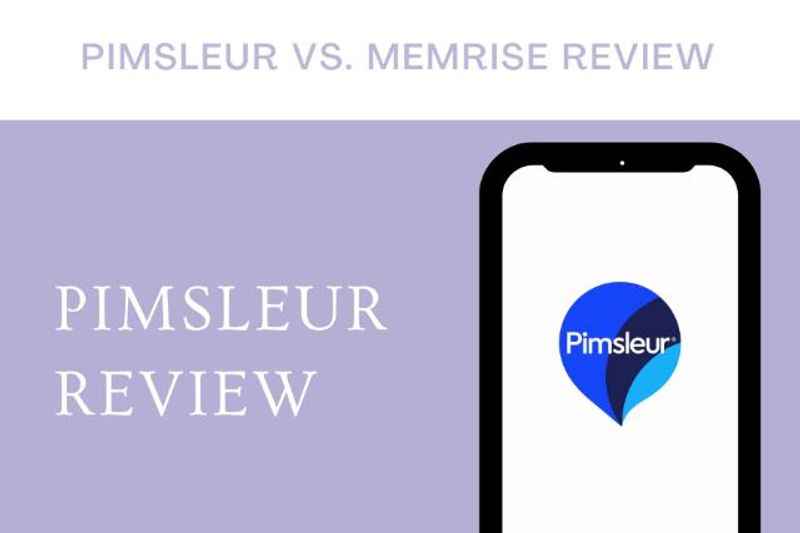
Pimsleur Japanese and Memrise Japanese are designed for individuals who are eager to learn Japanese, improve their speaking skills, and expand their vocabulary.
Pimsleur Japanese is particularly suitable for those who prefer an audio-focused approach to language learning.
With its proven method, learners can quickly grasp Japanese phrases, engage in conversations, and understand the language.
On the other hand, Memrise Japanese is ideal for individuals looking to learn Japanese words and build their vocabulary.
Through interactive and engaging activities, learners can acquire a wide range of Japanese words, enabling them to communicate more effectively.
Both courses cater to different learning preferences, ensuring a comprehensive and enjoyable language learning experience.
Pimsleur Pros
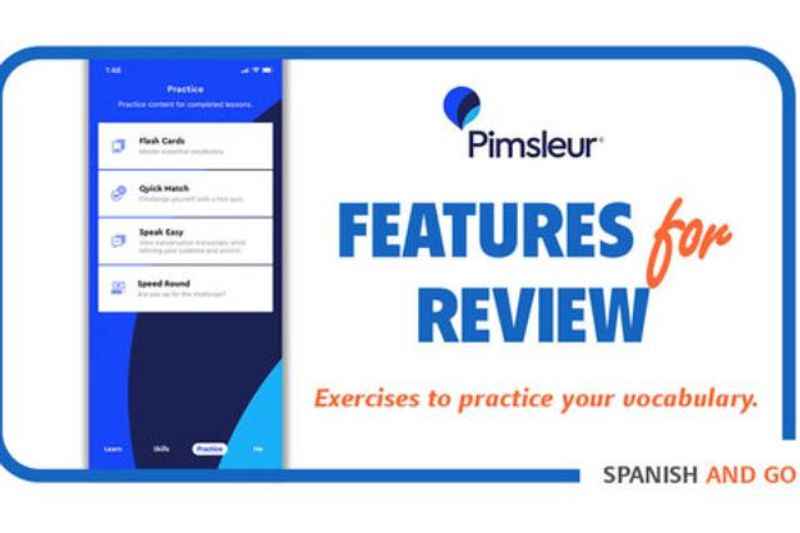
- Excellent Audio Tool
- Proven Language Learning Method That Works
- User-friendly on Desktop & App
- Huge Amount of Premium Content
Memrise Pros
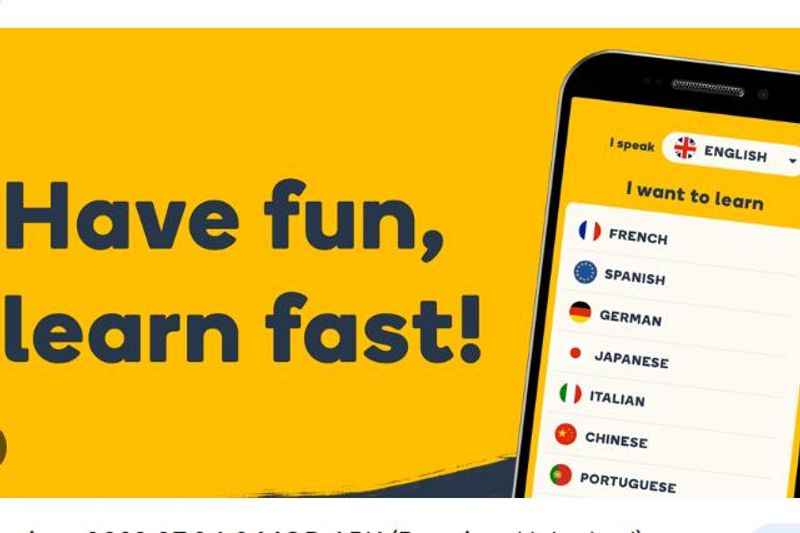
- Fun & Interactive App
- Unique Learn with Locals Feature
- Best Spaced Repetition System I've Tried
- Great Resource for Travel Vocabulary
What is Pimsleur? A Quick Background

Pimsleur’s entire setup and course structure is based on its own successfully (and scientifically) proven method, the Pimsleur Method.
This method was one of the first to adopt an SRS (Spaced Repetition System).
Pimsleur recommends 30 minutes of study per day, no more and no less. You may think that this is just a way to elongate your subscription, but once you get started, you'll see that half an hour is optimal.
Why?
You’re learning a lot of a new language in a short space of time, and any more than 30 minutes per day could defeat the purpose of the Pimsleur Method.
If you are someone who learns well by aural means (listening), then the Pimsleur Method will absolutely work for you.
Pimsleur’s aim is to get its users conversational as quickly as possible. The more you can speak and communicate effectively in a foreign language, the higher your confidence will be and the more fun it becomes.
Pimsleur Japanese
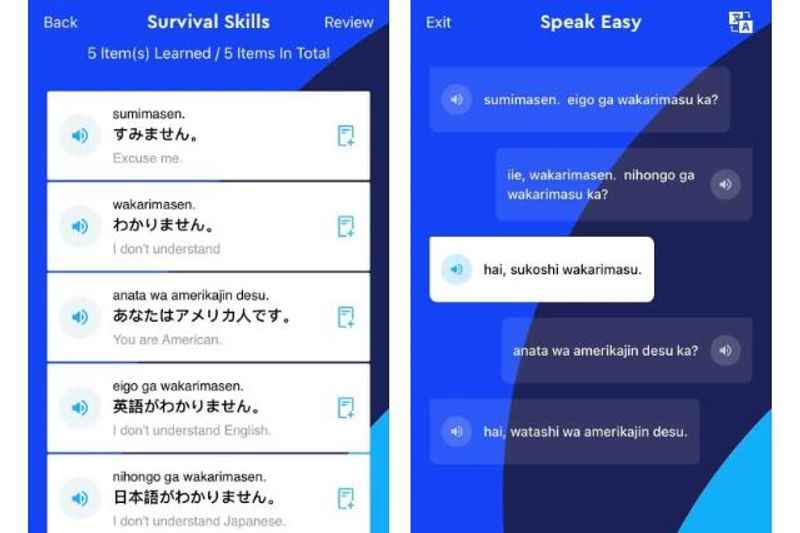
Pimsleur Japanese comes with access to 5 Premium Levels, each level containing 30 lessons lasting 30 minutes.
Taking into account the flashcard and other visual activities you are able to run through after each lesson, this totals more than 110 hours of learning time.
The majority of phrases and vocabulary that you learn throughout Pimsleur Japanese is useful. In lesson 1, you learn how to say excuse me, I speak a little Japanese, Do you speak English? etc.
At the beginner stages of language learning, these are exactly the kind of phrases we need to know.
Naturally, as you progress in the course, the content becomes more difficult, introducing new words, and phrases, and explaining early-stage Japanese sentence structure (desu, meaning "is", goes at the end of sentences, for example).
Pimsleur Lessons
This review is based on a trial period with Pimsleur Premium. Premium access is the best way to experience the full potential of the app.
A great feature of Pimsleur is that you are constantly provided with context to what you’re learning, listening to two native speakers and then being prompted to participate in their discussion, playing the role of both.
The increase in difficulty is carried out by Pimsleur at quite a natural pace. By lesson 5 of Pimsleur Premium, you will already know how to ask for directions to the main train station in Tokyo, Shinjuku Station.
You learn how to ask and respond to directions and by doing so pick up a lot of new vocabulary.
Pimsleur lessons are engaging but this is due to the length of the lesson as much as the actual content. 30 minutes of this type of learning is usually enough for most brains!
Pimsleur Japanese Content Overview

You can access your Library at any time to see which levels you are signed up for, but it’s a little like opening a book to see the chapters without viewing the contents of each chapter.
Whilst this is slightly annoying, it’s not a major inconvenience. Besides, it’s probably better for each lesson to be new and refreshing.
Pimsleur provides a clear language path that logically moves through everyday topics to help you learn to speak Japanese.
The Pimsleur Dashboard Features
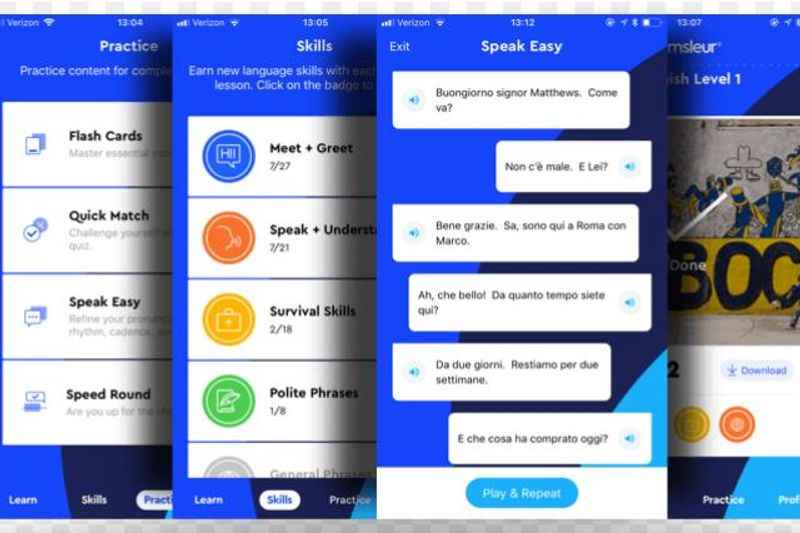
The premium model of Pimsleur Japanese provides access to Pimsleur’s user-friendly and slick dashboard. To the right of the audio lesson, there are a number of visual features to run through which reinforce what you’ve learned in each lesson.
This includes Flashcards, a Quick Match Round, a Speed Review, and a Speak Easy section.
In addition to this, you can save key vocabulary and phrases in a dedicated Skills Section. The further you progress within the course, the more of this you unlock. So, with each completed lesson, you learn new language skills.
By level 6, (within 3 hours of study), you will uncover and unlock parts of Meet & Greet, Survival Skills, Speak & Understand, General Phrases, Directions, Travel, Time, and Food.
The more you progress in the course, the more words and phrases go into these categories which you can review.
The Pimsleur App

Pimsleur on mobile is very similar to the desktop version. One particular aspect of Pimsleur on Mobile many people think is great is the ability to switch to Driving Mode.
This is great because it means you can learn on the go, which is something you cannot do so easily with Memrise, requiring a greater degree of interaction.
You can be a little more passive with Pimsleur, listening in the car on your way to work or whilst you’re out walking or exercising.
On both desktop and app, each Pimsleur lesson contains a cultural element about Japan or the relevant target language which you can review in your own time.
Of course, this isn’t a linguistic bonus but it is a positive feature of the Pimsleur app.
Now, let's compare Pimsleur with Memrise.
What is Memrise?

Memrise is a language learning app that claims to be the fastest way to learn a language.
It can be used on desktop but it is clear to see Memrise has invested quite heavily in its app, which contains a number of awesome features exclusive to it.
Memrise teaches vocabulary in a very efficient manner. It is one of the best language-learning apps with this specific focus in mind.
It is a great tool for visual learners and differs greatly from Pimsleur in this aspect.
That being said, it is not necessarily the fastest way to learn a language.
Our Thoughts on Memrise

We have been using Memrise for the same amount of time that we have been using Pimsleur. Thanks to Memrise, we have learned a lot of Japanese phrases and vocabulary in the Latin alphabet.
Whilst you can learn Hiragana (a Japanese script) with Memrise, many people do not remember patterns well from digital flashcards.
Memrise is a fantastic resource if you’re looking to learn vocabulary fast in a way that is interactive and fun. It will definitely help you to interact with people.
However, it doesn’t teach you to speak with fluency in the same way that Pimsleur does.
The best way to describe Memrise is like memorizing a travel phrase book that you would carry around with you in your pocket. Instead of having to open your phrase book to communicate, you’ve got it all upstairs, lodged in your memory.
And what’s more, you’ve put it all there in a very short space of time. Also using (SRS) - a Spaced Repetition System - Memrise is the best resource of its kind for travel vocab.
However, when it comes to actually conversing with people, communicating in Japanese, and understanding the Japanese language, Pimsleur is a better language-learning tool.
Memrise App Features
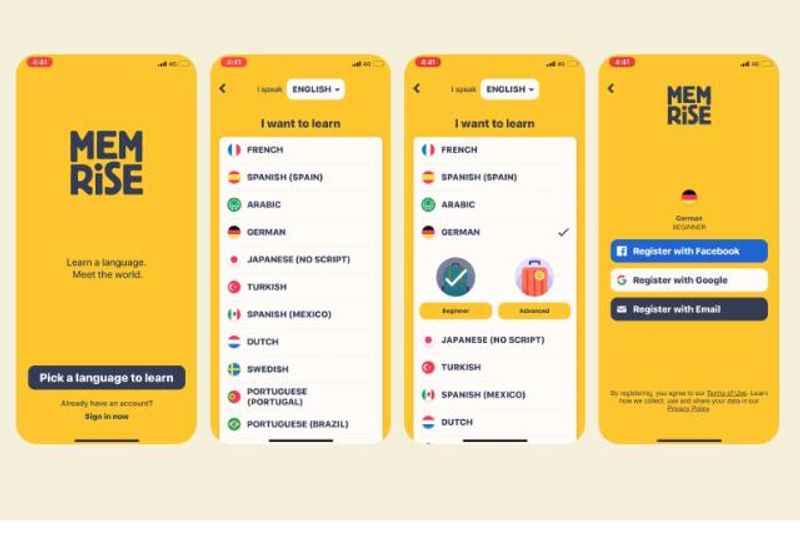
In terms of user experience and layout, the Memrise app is excellent. There are several features, including grammar practice and explanation, that you can no longer access from the desktop.
We think the idea is that Memrise Pro members use the app whilst out of the house, on the go throughout the day (in a Covid-free world).
Many people actually prefer studying at home but are happy to do so in bed with a mobile.
Within the Memrise App, You Can...
- Set a daily study time goal
- Set the number of words and phrases you want to learn each day
- Practice your pronunciation
- Take part in listening practice
- Listen to native speakers
- Take speed review tests
- Read and take part in grammar explanations and games
What is the Difference Between Memrise and Memrise Pro?
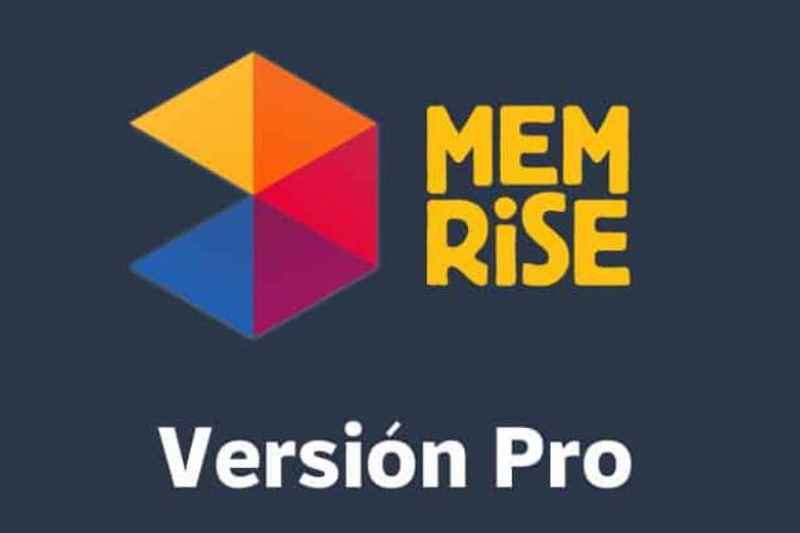
Memrise provides access to around 70% of its features without a Pro subscription.
However, they are currently trialing the new layout in Beta mode and we believe added benefits with more extensive exercises are soon to be introduced.
Often, a Pro membership is not worthwhile if you already have access to a huge part of the app features, but Memrise is one of the cheapest language learning resources out there, starting at $5 p/month.
Other Memrise Features
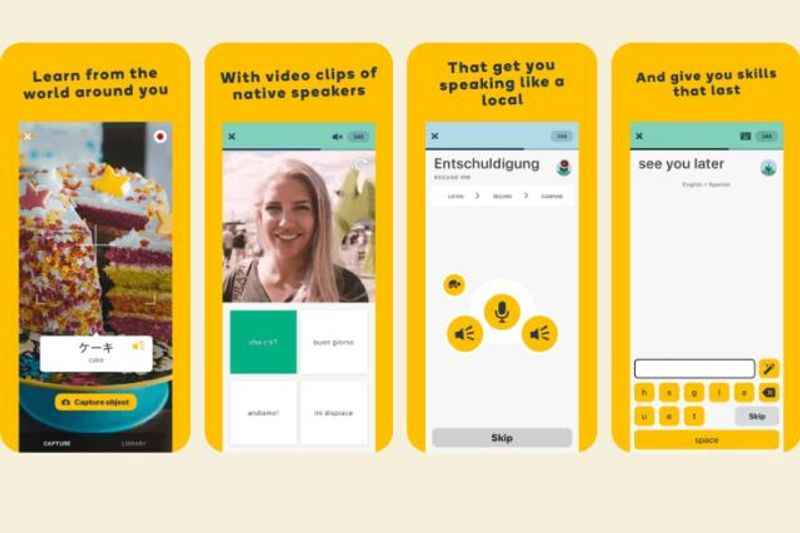
We have included a more detailed explanation of other Memrise features, including Memrise Mems and how Memrise works in a dedicated Memrise review.
Memrise Learn with Locals Feature
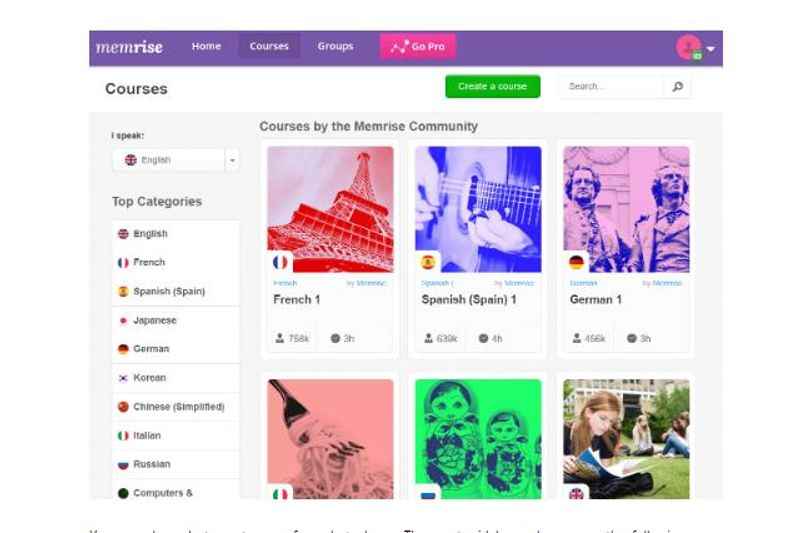
The Memrise Learn with Locals feature is the best feature of the Memrise app. With this feature, you are spoken to by a native Japanese person (or any other language you choose to study). As a result, you get used to hearing the Japanese language and repeating it after the speaker.
Not only is this language learning method great for aural and visual learners, but it also helps users to remember useful travel phrases.
With Memrise Japanese, you'll learn how to ask for the Wi-Fi password, ask for directions, and call somebody a genius within 48 hours of downloading the app. Again, this won’t lead you to fluency but it will certainly help you when traveling or on vacation.
FAQs Related to Pimsleur Japanese and Memrise Japanese
Now that you know all about these learning apps, let's look at some frequently asked questions on this topic.
Is Speaking Japanese harder or easier than writing Japanese?
Speaking Japanese can be considered easier than writing as oral communication and pronunciation tend to come a little quicker than learning the complex written characters of the Japanese writing system. If you want to write in Japanese, you need to learn Hiragana, Katakana, and Kanji.
Can you learn Japanese by only taking courses?
While taking courses is a valuable component of learning Japanese, additional practice through immersion, conversation, and exposure to Japanese media can greatly enhance language acquisition.
Is there any other Japanese course I should know about?
Rosetta Stone is another popular Japanese course that utilizes interactive lessons and immersion techniques to help learners develop their Japanese language skills.
Is learning Japanese time-consuming?
Learning Japanese requires dedication and consistent effort, so it can be time-consuming, but the progress and proficiency achieved make it a rewarding endeavor.
Summing Up: Pimsleur Japanese Vs Memrise Japanese - Which is Better?
Drumroll please…Pimsleur is the winner.
Both Pimsleur Japanese and Memrise Japanese are highly regarded language-learning companies that offer comprehensive courses to help individuals learn Japanese effectively.
However, when it comes to learning Japanese for travel purposes, Pimsleur Japanese is going to teach you a lot more in a shorter space of time.
Pimsleur's audio lessons and proven method focus on helping you speak and understand the language, making it a great choice for conversational skills.
Meanwhile, Memrise excels in vocabulary building, offering an interactive and fun approach to learning. This is valuable for traveling, but you’re not going to develop fluency through this app alone.
Both options incorporate the Spaced Repetition System to reinforce learning. By utilizing these courses, you can enhance your language skills and confidently communicate with native speakers during your travels in Japan.
Start your language learning journey today and unlock new opportunities for immersive experiences abroad.







